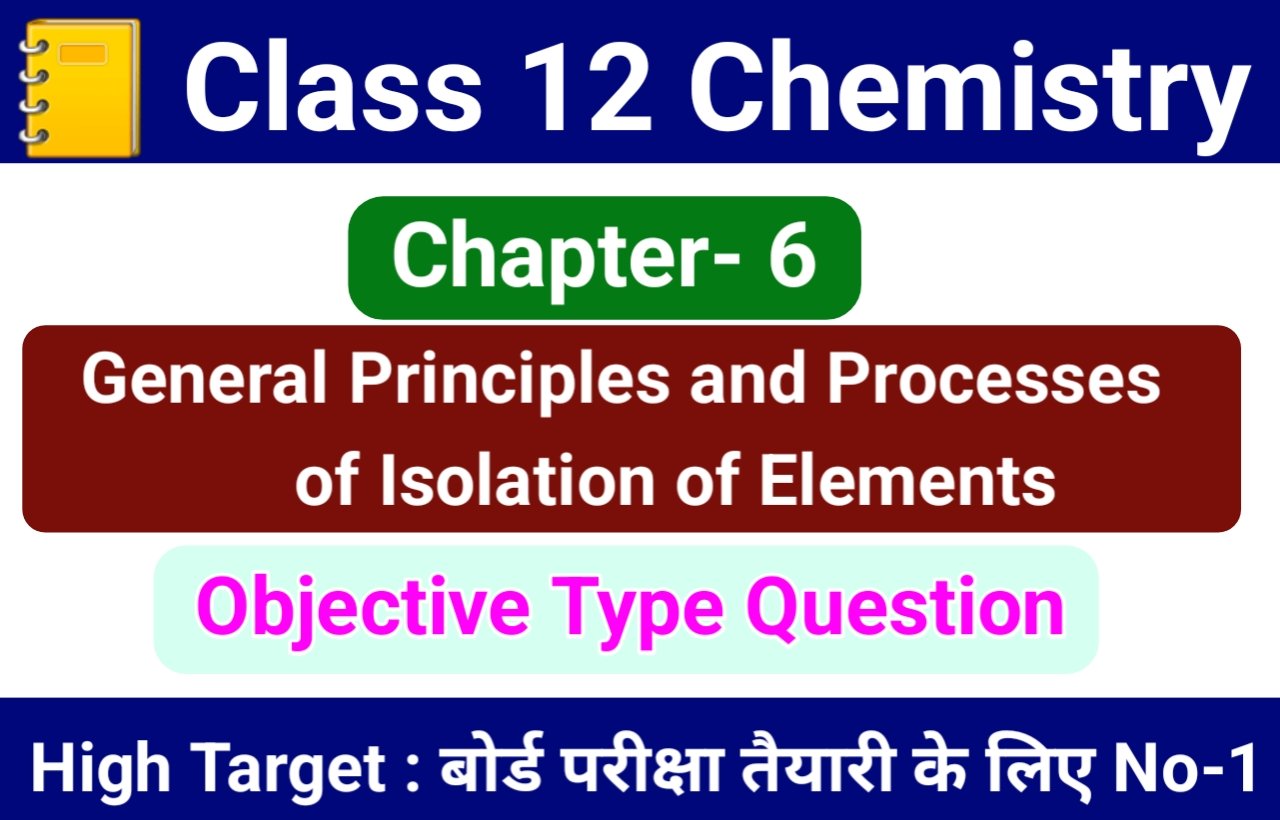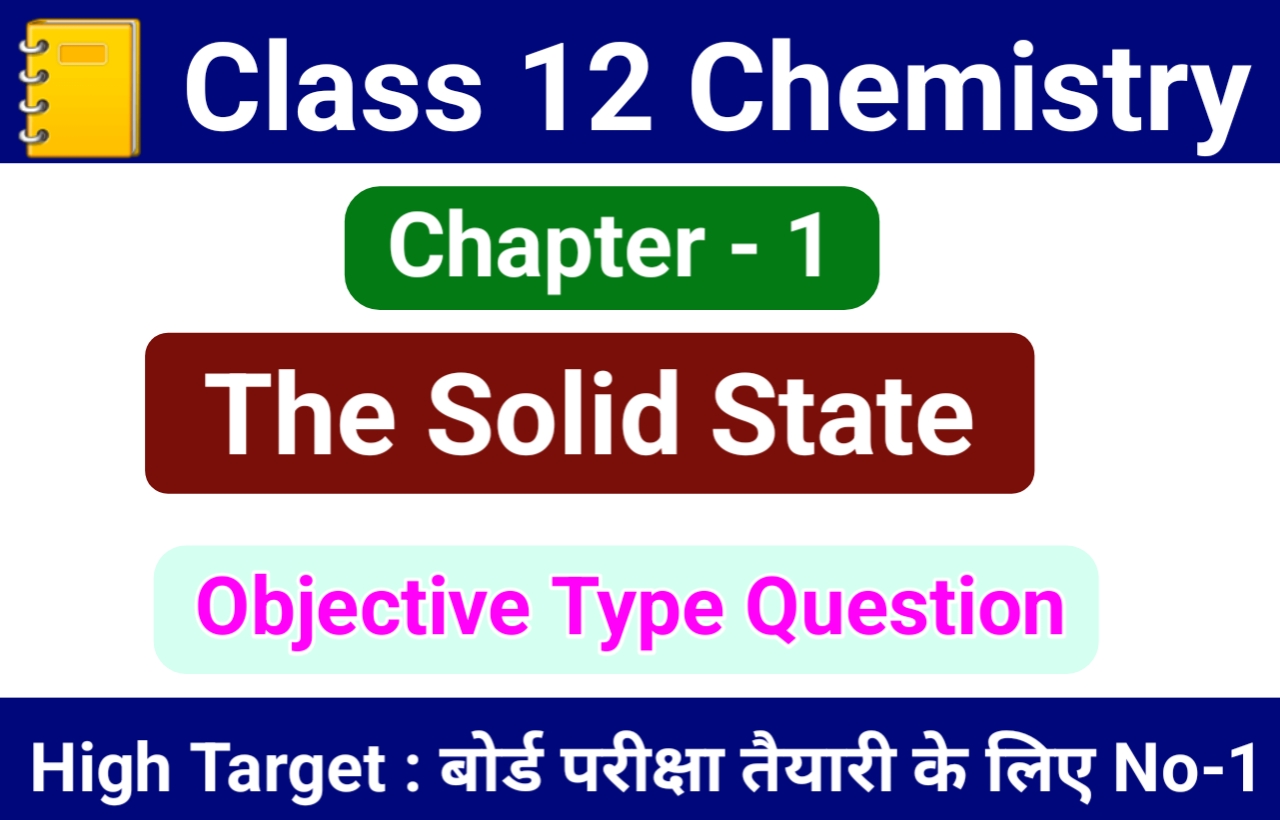
6. GENERAL PRINCIPLES & PROCESSES OF ISOLATION OF ELEMENTS Objective
6. GENERAL PRINCIPLES & PROCESSES OF ISOLATION OF ELEMENTS
1. Removal of the unwanted materials like sand, clays, etc. from the ore is known as ……., …… Or …….
(A) concentration, dressing, benefaction
(B) separation, refining, gangue
(C) magnetic separation, purification, gangue
(D) washing, refining, amalgamation
2. How do we separate two sulphide ores by froth floatation method ?
(A) By using excess of pine oil
(B) By adjusting proportion of oil to water or using depressant
(C) By using some solvent in which one of the sulphides is soluble
(D) By using collectors and froth stabilisers like xanthates
3. Common impurities present in bauxite are
(A) Cuo
(B) Zno
(C) CaO
(D) SiO2
4. Which of the following ores cannot be concentrated by magnetic separation ?
(A) Haematite
(B) Malachite
(C) Magnetite
(D) Siderite
5. Which of the following metals is extracted using a silica lined convertor ?
(A) Mg
(B) Al
(C) Cu
(D) Zn
6. Which of the following metals cannot be obtained by reduction of its metal oxide by aluminium ?
(A) Cr
(B) Mn
(C) Fe
(D) Mg
7. In metallurgical process, aluminium acts as
(A) an oxidising agent
(B) a reducing agent
(C) acidic flux
(D) basic flux
8. In blast furnace iron oxide is reduced by
(A) silica
(B) carbon monoxide
(C) carbon
(D) lime stone
9. In a thermite process ……. is used as reducing agent.
(A) Zn
(B) Al
(C) Mn
(D) Fe
10. Which of the following slags is produced during extraction of iron ?
(A) CaSiO3
(B) FeSiO3
(C) MgSiO3
(D) ZnSiO3
11. Which of the following reactions takes place at higher temperature range (900 K – 1500 K) in blast furnace ?
(A) 3Fe2O3 + CO → CO → 2Fe3O4 + CO2
(B) FeO + CO → Fe + CO2
(C) Fe3O4 + 4CO → 3Fe + 4CO2
(D) Fe2O3 + CO → 2FeO + CO2
12. Which of the following metals cannot be obtained by electrolysis ?
(A) Cr
(B) Na
(C) Ca
(D) Mg
13. In electro-refining of copper, some gold is deposited as
(A) cathode mud
(B) electrolyte
(C) anode mud
(D) cathode
14. Most electropositive metals are obtained from their ores by
(A) autoreduction
(B) smelting with carbon
(C) electrolysis of fused salts
(D) thermal decomposition
15. During the process of electrolytic refining of copper, some metals present as impurity settle as anode mud. These are
(A) Sn and Ag
(B) Pb and Zn
(C) Ag and Au
(D) Fe and Ni
16. A number of elements are available in earth’s crust but most abundant elements are
(A) Al and Fe
(B) Al and Cu
(C) Fe and Cu
(D) Cu and Ag
17. Electrolytic refining is used to purify which of the following metals ?
(A) Cu and Zn
(B) Ge and Si
(C) Zr and Ti
(D) Zn and Hg
18. Dolamite mineral contains
(A) Mg
(B) Al
(C) Ca
(D) K
19. Name important ore of aluminium
(A) Bauxite
(B) Cryolite
(C) Croundum
(D) None
20. NaOH is known as
(A) Caustic soda
(B) Washing soda
(C) Caustic Potash
(D) All
21. The formula of blue vitriol is
(A) CuSO4
(B) CuSO4.5H2O
(C) CaSO4.2H2O
(D) None


